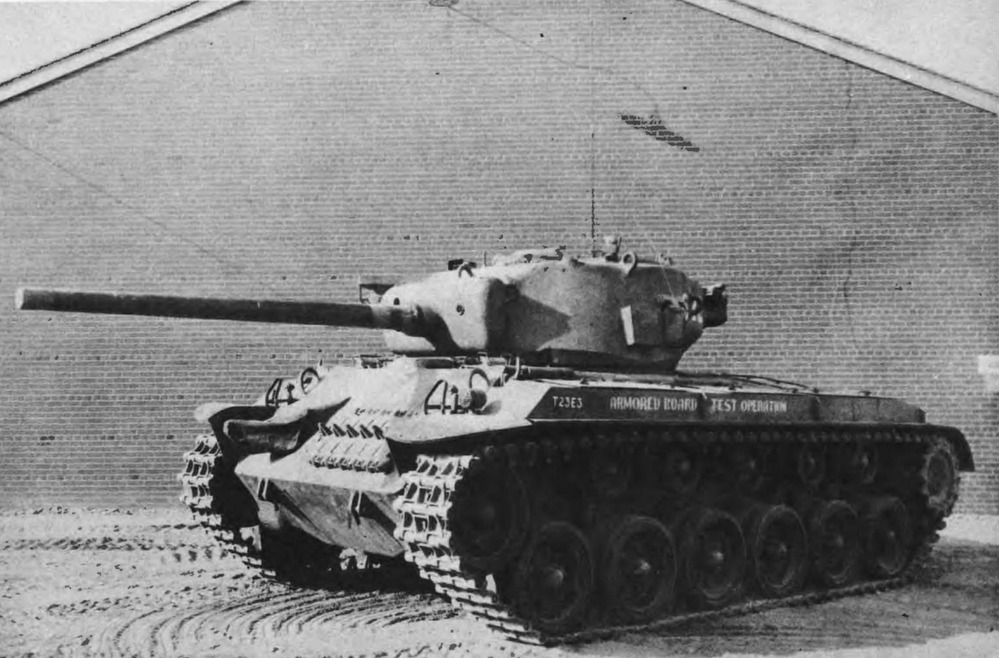History
Development of a replacement for the Medium Tank M4 began in the spring of 1942, almost immediately after the Sherman was standardized. This program, initiated as the M4X project, produced the T20 and T22 pilots; however, both suffered transmission issues and did not proceed into production.
The T23 was another derivative of the T20 program, designed specifically to test an electric transmission. The first pilot was completed at General Electric Company’s Erie Works in January 1943, with more pilots following later. At first, the T23 used the same VVSS suspension as the Sherman, and its hull layout resembled the T22 more than the T20. Powered by a Ford GAN engine driving a generator for the electric motors, the T23 was heavier than both the T20 and T22. Its early turret design was eventually replaced by the T80 gun mount in a cast turret, which was later standardized as the M62 beginning in October 1943 on production-model T23s.
In April 1943, the Ordnance Committee recommended building a T23 variant with torsion bar suspension, which was officially approved in December 1943. Chrysler was authorized to build two pilots, which were later reduced to only one. The resulting vehicle, the T23E3 (registration number 30103068), was completed and delivered to the Detroit Tank Arsenal on August 29, 1944, for shipment to Fort Knox.
The T23E3 ran on 19-inch-wide center-guided tracks supported by torsion bar suspension, with six dual road wheels on each side. The first two and last two road wheels were fitted with shock absorbers, and five dual return rollers supported the tracks. This design was intended to improve ride quality and reduce ground pressure compared to the VVSS system.
The turret and much of the equipment were carried over from production T23 number 19, whose registration number the T23E3 also inherited. The turret was updated by removing the basket and relocating equipment previously mounted on the turret platform. Its suspension and tracks were adapted from a T25E1 medium tank tested at Aberdeen, while a newly manufactured hull was built specifically for the T23E3. Once completed, the pilot vehicle was shipped to the Armored Board at Fort Knox for testing.
In July 1943, there was a proposal to standardize the T23E3 as the Medium Tank M27, with its electric drive and torsion bar suspension. At the same time, the T20E3 would have been standardized as the M27B1, featuring a Torqmatic drive with torsion bar suspension. However, despite the tests at Fort Knox being a success, the proposed standardization was never approved, and no production followed. With the war nearing its conclusion and interest in electric-drive tanks waning, the T23E3 remained a one-off prototype and, along with the T23 series, was rendered obsolete by late 1944.







